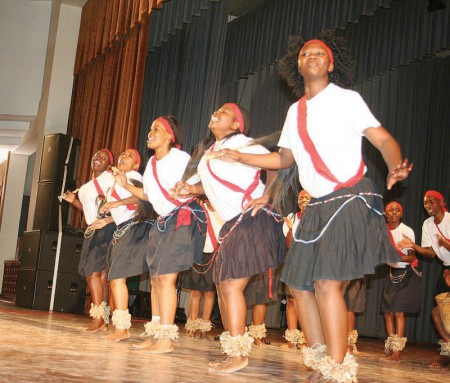Whither Botswana�s marginalised languages?
Nnasaretha Kgamanyane | Friday February 20, 2015 16:38


Only Setswana and English have official status in Botswana, whereas other languages are so marginalised some are either on the verge of extinction, if they have not died out already.
The marginalised language are not taught in schools and are confined to their speakers only, who have also become assimilated to Setswana language.
Languages that are marginalised in Botswana include iKalanga, Herero, Mbukushu, Seyei, Sesobeya, various Sesarwa dialects, Ndebele, Zezuru, Xhosa, Nambza and many others.
On this day, when people all over the world are expected to be proud of their mother tongue, enjoying speaking the rich languages they inherited from their ancestors, nothing of that sort will happen.
Instead, proceedings will be in either English or Setswana. There will be no official encouragement for people who speak other languages, especially those in danger of disappearing in the near future.
Expectations are that parents are the ones who should teach their children how to speak their languages, but time and again, this raises questions on what will happen to the languages if all the elders were to die.
While English is the official language and Setswana is the national language, there are over 20 other languages and dialects spoken in Botswana.
Although about 90 percent of citizens speak Setswana as their mother tongue and literacy, which is said to stand at 85 percent translates into spoken and written English, the government is not helping in the revival and preservation of other languages.
According to Wikipedia, among the languages hardest hit by government’s indifference to their marginalisation, are languages referred to as Sesarwa by Tswana speakers.
These languages are Hua, Ani, Ju’hoa, Gani, Gciriku, !Xóõ, Shua, Tsoa and Naro. By 2004, some of these tribes numbered as little as 200.
Then there are the Kuhane, or Basubiya. Found in the Northwest and Chobe Sub District, only 3,000 of them were found in Botswana by 2006.
By 2006, only 200 Nama were found in Kgalagadi District in Tsabong, Makopong, Omaweneno, Tshane. Others were located in Gantsi district in villages along Gantsi-Mamuno road.
Their alternate names are Berdama, Bergdamara, Dama, Damaqua, Damara, Khoekhoegowab, Namakwa, Naman, Namaqua, Rooi Nasie, Tama, Tamakwa and Tamma.
Afrikaans is found in the Gantsi District, mainly in commercial farms and Gantsi village and also in south Kgalagadi District, especially near South Africa border villages of Werda, Middlepits, Bokspits and others.
About 15,000 Babirwa are found in the Central District in the Bobonong subdistrict in the villages of Bobonong, Kobojango, Semolale, Motalatau, and Mathathane.
The BaHerero numbered around 31,000 by 2006 and they are found scattered the Northwest District villages of Maun, Gomare, Sehitwa, Makakung, Nokaneng, Shakawe, Nxaunxau and other settlements.
In the Central District they are found in Mahalapye, Toromoja, Rakops, Mokoboxane, Letlhakane and in the Gantsi District they are found in Charles Hill, Gantsi, Makunda, Dryhoek, New Kanagas and Dekar.
In Kgalagadi District, Baherero can be found in Tsabong, Omaweneno, and Werda. There are also Baherero in Kgatleng District especially in Morwa village. Most of Baherero came as refugees from Namibia in the early 1900s.
By 2004 there were 20, 000 Mbukushu in the Northwest District, north of Gumare within 30 kilometres of the Okavango River. The population of BaNambzya was 15,000 in Botswana by 2004.
Apparently, only BaKalanga who numbered around 150.000 by 2004, seemed to have managed to resist the domination of the Tswana speakers. The Bakalanga speak dialects of Ikalanga, Lilima (Humbe), Nyai (Nyayi, Rozvi), Peri and Talahundra.
BaKgalagadi also are a significant lot with about 40, 000 of them found in north Kgalagadi District, west Kweneng and Southern districts.
They are found in Gantsi, Kanagas, Tsotsha, Kuke, Karakobis, Ncojane, Kule, Charles Hill, New Xade, Dekar and Grootlaagte.
In the Northwest District they are found in Sehitwa and Maun. Their dialects: Balaongwe (Boloongwe), Kenyi (Khena), Kgalagadi (Kgalagari), Kgwatheng, Khakhae, Koma, Ngologa, Pedi, Phaleng, Rhiti, Shaga, Shelala, Siwane (Gyegwana), Tjhauba.
Apparently, Ngologa is the largest dialect and may be a separate language. SeKgalagadi is different from Tswana.
Other languages and groups found in Botswana are Lozi, Tswapong and Zezuru.
